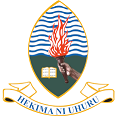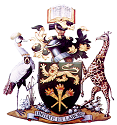-
7
-
5
-
4
-
4
-
4
Instructions to Authors
The Operations Research Society of Eastern Africa (ORSEA) Journal
Operations Research Society of Eastern Africa (ORSEA) Journal, is a semi-annually refereed journal publishing original scholarly and practitioner material on operations research. It is open to, and indeed encourages a wide range of topical issues and emerging methods, conceptual approaches, and substantive problem areas within the domain of operations research. It is devoted to the improvement and further development of theories and practices of operations research and it is designed to appeal to academics, practitioners and policy makers. Articles submitted for publication must conform to “ORSEA Authors’ Guidelines”.
ORSEA Authors’ Guidelines
General Guidelines
- Submitted papers must have not been published elsewhere and are not under consideration of being published by any other journal or publisher. If a part of a contribution that an author wishes to submit to ORSEA Journal has appeared or will appear elsewhere, the author must specify the details in the cover letter.
- All the manuscripts submitted are subjected to be peer-reviewed by two or more experts in the fields, and a decision is returned to the authors in about one month. In case review process take more time, the authors will be notified by email. Manuscripts with significant results will be reviewed and published at the highest priority and speed.
- Possible decisions on a manuscript are:
- accepted as it is
- accepted after minor revision
- accepted after major revision
- rejected
If minor revision is required, authors should return a revised version as soon as possible within 15 days. If major revision is required, authors should return a revised version within 25 days.
- Plagiarism is highly prohibited. This include the use or close imitation of the language and ideas of another author and representation of them as one's own original work. Duplicate publication, sometimes called self-plagiarism, occurs when an author reuses substantial parts of his or her own published work without providing the appropriate references. This can range from getting an identical paper published in multiple journals, where authors add small amounts of new data to a previous paper. All submitted manuscripts will be subjected to https://turnitin.com before sending to reviewers
- The article and text submitted should adhere to the stylistic and bibliographic requirements outlined in the Author Guidelines, which is found in About the Journal. See http://journals.udsm.ac.tz/index.php/orsea/index
- Privacy Statement: The names and email addresses entered in this journal site will be used exclusively for the stated purposes of this journal and will not be made available for any other purpose or to any other party.
- Attachments: When submitting a paper, the author should attach a separate covering sheet indicating the number of words and the author's name, title, current physical address, telephone number, fax number and e-mail address.
- Permissions: Prior to article submission, authors should clear permission to use any content that has not been created by them. Failure to do so may lead to lengthy delays in publication.
Article requirements
- Format: The submitted articles should be in Microsoft Word format. Other formats are not allowed. The article should be in Times New Roman, single-spaced and font size 12.
- Article Length: Articles should be between 5000 and 8000 words in length. This includes all text including references and appendices. The article must be preceded by an abstract of no more than 150 words and up to Four (4) keywords. Keywords should be the ones that explain the principle topics or issues of the article. They must be appropriate and short.
- Structure of the Abstract: The abstract is expected to be presented in a brief way and should include a brief summary of objectives of the study, methodologies and approaches, key findings, recommendations and implications.
- Sections of the article: Articles shall have un-numbered sections and subsections headings as follows: Section headings shall be in CAPITALS (UPPER CASE) while subsection headings shall be in Title Case. Authors are expected not to use bullets and numbering in their articles.
- Article Title: A title of not more than fifteen words should be provided. The authors should write their full names precisely, correct email addresses, and affiliation of each contributing author. The affiliation should be where they were based at the time of doing the research.
- Article Classification and Uniformity: Authors shall adapt a nearly-uniform format and reference style for submitted manuscripts. The suggested structure takes cognizance that while for some obvious reasons it may not be viable that all papers possess identical structure, it is desirable to have uniformity in terms of the flow of the papers’ contents. Thus, the objective is not for the papers to have sub-headings as outlined below, but for the contents to rhyme with the outline. The proposed outline also aims at, among other things, giving some flexibility to authors and keeping the number of subheadings to reasonable level (‘ideally’ between four and six).
- Papers based on field researches
- Introduction: This part introduces the idea behind the paper paving the way and leading the reader to the objective. Preliminary observations and literature, motivation, the significance of paper as well as research questions (where appropriate) are expected in this part.
- Theoretical background and review of literature: The aim is to make the issue addressed in the paper apparent as well as contribute in developing and understanding the methodology.
- Methodology: This part needs to cover the way the study was designed and carried out (i.e. including data collection)
- Analysis and interpretation of findings: The findings should be aligned to the objectives of the study. The author should clearly show how the objectives were achieved
- Discussion of the findings: The focus here is to discuss the findings by addressing possible explanations of the findings, comparing the results with those of the previous results, linking your arguments with those of the previous studies.
- Generalizations from the study/Conclusions and implication: The author is expected to briefly present what the paper was all about, concluding remarks based on the findings and theories, positioning the study/paper in the body of knowledge, and to draw theoretical, practical and policy implications.
- References: See Section 3 on Citations, Notes and References
- Papers solely based on Literature Review (library research): The structure needs to be similar to the one given above – but most likely with modified methodology and approaches.
- Practical/experiential papers: These are likely to be more descriptive in nature with core focus above sections in 6.1, but with some modifications. Articles of this kind should be supported/backed-up with relevant literature as appropriate.
- Notes/Endnotes: Notes or Endnotes should be used only if absolutely necessary and must be identified in the text by consecutive numbers, enclosed in square brackets and listed at the end of the article.
- Citations, Notes and References: References to other publications must be in APA style and carefully checked for completeness, accuracy and consistency. The authors should follow the style presented below:
- Citing a book
Author, A. (Year of Publication). Title of work. Publisher City, State: Publisher.
Holbeche, L. (2005). The High Performance Organisation: Creating dynamic stability and sustainable success. New York, NY: John Wiley & Sons, Ltd.
- Citing an e-book from an e-reader
Author, A. (Year of Publication). Title of work [E-Reader Version]. Retrieved from http://xxxx or DOI:xxxx
Adeyinka, T., and Mutula, S. (2010). A proposed model for evaluating the success of WebCT course content management system. [Kindle Version]. Retrieved from http://www.amazon.com/
- Citing a book found in a database
Author, A. (Year of Publication). Title of work. Retrieved from http://xxxx or DOI:xxxx
Raisamo, R., and Mtebe, J. (2014). A Model for Assessing Learning Management System Success in Higher Education in Sub-Saharan Countries. DOI: 10.1596/978-1-4648-0403-8
- Citing a journal article in print
Author, A. (Publication Year). Article title. Periodical Title, Volume (Issue), pp.-pp.
Bagorogoza, J. K. and Waal, A. A. (2010). The role of knowledge management in creating and sustaining high performance organisations: The case of financial institutions in Uganda. World Journal of Entrepreneurship, Management and Sustainable Development, 6(4); 307–324.
- Citing a journal article found online
Author, A. (Publication Year). Article title. Periodical Title, Volume (Issue), pp.-pp. DOI:XX.XXXXX or Retrieved from journal URL
Kasekende, L. & Opondo, H. (2003). Financing Small and Medium- scale Enterprises (SMEs): Uganda’s Experience. The Operations Research Society of Eastern Africa (ORSEA) Journal, 44(6), 49-68. DOI: 10.1111/bjet.2222
- Citing a general website article with an author
Author, A. (Year, Month Date of Publication). Article title. Retrieved from URL
Kessy, S. (2015, January 9). The Financial position in Tanzania. Retrieved from http://grantland.com/the-triangle/the-financial-position-in-tanzania/
- Citing a general website article without an author
Article title. (Year, Month Date of Publication). Retrieved from URL
Teen posed as doctor at West Palm Beach hospital: police. (2015, January 16). Retrieved from http://www.nbcmiami.com/news/local/Teen-Posed-as-Doctor-at-West-Palm-Beach-Hospital-Police-288810831.html
- Citing an encyclopedia entry in print
Author, A. (Publication Year). Entry title. In Encyclopedia title, (Vol. XX, pp. XX). City, State of publication: Publisher.
Kammen, C., & Wilson, A.H. (2012). Monuments. In Encyclopedia of local history. (pp. 363-364). Lanham, MD: AltaMira Press.
- Citing a magazine article in print
Author, A. (Year, month of Publication). Article title. Magazine Title, Volume (Issue), pp.-pp.
Tumulty, K. (2006, April). Should they stay or should they go? Time, 167(15), 3-40.
- Citing a magazine article found online
Author, A. A. (Year, Month of Publication). Article title. Magazine Title,Volume (Issue), Retrieved from http://xxxx
Tumulty, K. (2006, April). Should they stay or should they go? Time, 167(15) Retrieved from http://content.time.com/time/magazine/article/0,9171,1179361,00.html
- Citing a newspaper article in print
Author, A. (Year, Month Date of Publication). Article title. Newspaper Title, pp. xx-xx.
Rosenberg, G. (1997, March 31). Electronic discovery proves an effective legal weapon. The New York Times, p. D5.
- Citing a newspaper article found online
Author, A. (Year, Month Date of Publication). Article title. Newspaper Title, Retrieved from newspaper homepage URL
Rosenberg, G. (1997, March 31). Electronic discovery proves an effective legal weapon. The New York Times, Retrieved from http://www.nytimes.com




